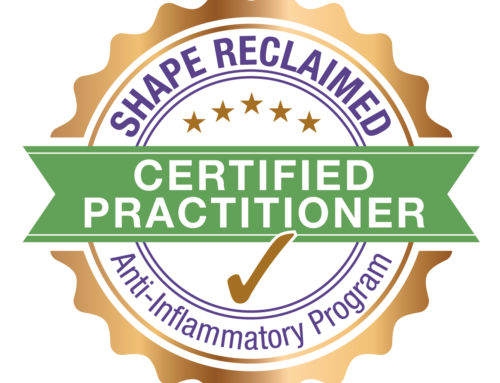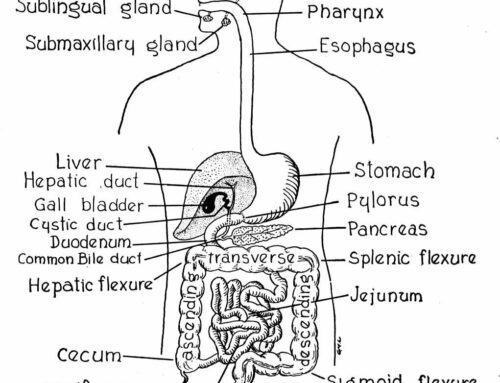Here’s a quick three question true or false quiz for you:
1. The cause of gastric/acid reflux is too much stomach acid.
2. When we are stressed, we produce extra stomach acid.
3. Antacids stop acid reflux.
What are your answers? If you are like most Americans you probably answered true to all three. Over the course of our lifetime you have most likely heard endless advertisements telling you so. Well, sorry. These are all false! They are common misconceptions.
Acid indigestion is a misdiagnosed and misunderstood condition. Here’s two important points you need to understand. First, acid reflux or GERD does not necessarily mean that there is too much stomach acid or HCl, which is a common belief. The actual truth is that many people diagnosed with acid reflux (too much stomach acid) actually produce too little.
Second, there are other acids in the stomach besides HCl. These are the true acids of acid reflux. So where do they come from? Food enters the upper part of stomach where it can sit for up to an hour waiting for the body to produce enough acidity to activate its enzymes for protein digestion.
In a young, healthy person it takes approximately 45 minutes for the stomach to reach the pH that releases pepsin. During this time the salivary enzymes continue to work. If we ate some raw foods we would also have those enzymes assisting in digestion. However, if we eat mostly cooked food and overeat it, something else is happening – it is decaying rather than being digested. Decaying food produces organic acids of putrefaction and fermentation – these are the acids of indigestion.
In addition, people who suffer from indigestion are often stressed, and eat in a rush, on the run, or while upset. We have been told stress makes our stomach pump out too much acid, causing heartburn and ulcers. But here’s the truth about stress and digestion.
The actual fact is that stress engages the sympathetic nervous system. This suppresses digestion, and thus HCl production. Think about it. Our sympathetic response is also called “fight or flight.” Back in the good old days if you saw a tiger (that would be a stress) you would want to run as fast as possible to get away. The alternative of fighting it would be a losing proposition. If you are running from a tiger your body is not worried about digestion. The same thing occurs when we eat while stressed. The body does not worry about making enzymes so the food sits longer in the stomach.
Producing insufficient HCl is called hypochloridria. A sympathetic nervous system response is one factor. There are others. As we age we make less HCl. In fact, by age 65 we make about 15% of the HCl we produced at age 25. Ever notice how more of the elderly seem to have acid reflux and other digestive issues?
Other causes include excessive use of antacids, a salt-free diet, chronic illness, and an increased metabolic demand (such as sports). Hydrochloric acid is made from hydrogen and chloride. Salt, better known as sodium chloride, is a source of chloride. Zinc is a key mineral required in the body’s process of making HCl. Chronic illness can deplete zinc. It is also rather ironic that zinc requires an acidic environment in the stomach to be absorbed. This requires HCl. So, HCl requires zinc and zinc requires HCl. An increased metabolic demand also burns up the minerals needed to make HCl.
How do you know if you are hypochloridric? Symptoms include: burping, bloating, bad breath, indigestion. Gas is the first sign that food is not digesting – it is rotting. As I said before fats go rancid, proteins putrefy, and carbohydrates ferment producing the “organic acids” of acid reflux.
At the root of acid reflux is poor diet – The Standard American Diet (or appropriately abbreviated as SAD). This is a diet high in processed foods, carbohydrates, starches and sugars, heavy in meat and particularly processed meat, and low in fiber. Don’t get me wrong, there is nothing wrong with meat, it is just the quantity with respect to other foods and the overall quality that most Americans eat that is problematic. At the same time the diet is low in nutritious foods such as vegetables and healthy meats. Poor digestion occurs from the combination of poor food quality and lack of good bacteria and sufficient enzymes.
Other triggers for acid reflux include: tight fitting clothes, lying down too soon after eating, eating large meals, and specific foods that irritate (such as tomatoes, citrus fruit, dairy, meat, alcohol, coffee, high-fat foods, fried foods, spicy foods, onions, and chocolate).
While acid stopping medications and antacids can make the resulting symptoms better in the short term, but make the original problem worse! Here’s why. We are essentially turning off digestion at the stomach and attempting to resume it in the small intestines.
We know this is not a good idea! As we learned we need an acidic stomach to digest proteins and specific key nutrients (calcium, iron, zinc, and Vitamin B12). Without these we can become malnourished and lacking key nutrients. This can lead to protein deficiency problems, B12 deficiencies, nail problems, iron anemia, allergies, and osteoporosis.
As mentioned earlier HCl kills bacteria and parasites. Without it, we are more susceptible to them. They too are linked to a wide variety of illnesses. Rotting food also contributes to degeneration of the gastric mucosa, increasing the likelihood of a gastric ulcer.
And perhaps most important – digestion is a north to south process. If we get behind in the stomach this places extra burden on the downstream organs.
Bernard Rosen, PhD is a Nutrition Consultant and Educator. He works with individuals, groups, and at corporations to create individualized nutrition and wellness programs. His office is in Coeur d’Alene, ID. To learn more or to schedule an appointment, e-mail at bernie@brwellness.com, call (208) 771-6570 or go to www.brwellness.com.







